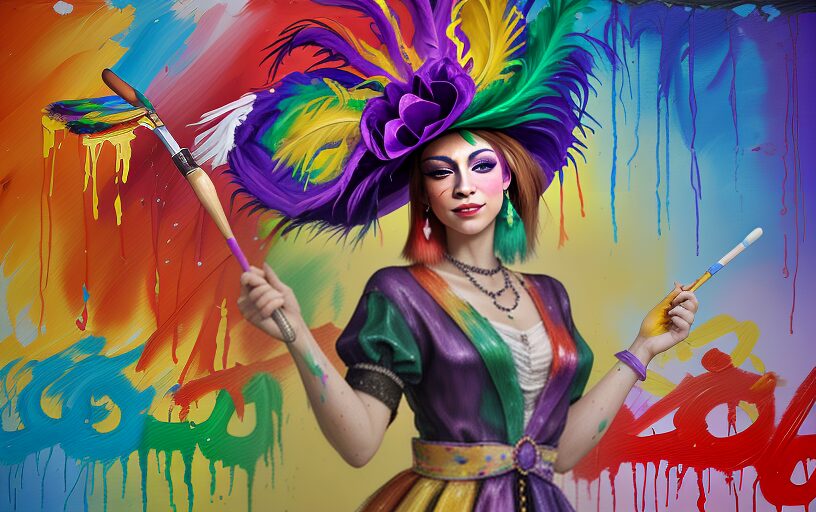Happy Mardi Gras, a celebration of feasts, mythical powers, and indulgence in all our favorite food and drink. Mardi Gras is French for “Fat Tuesday,” “mardi” means Tuesday, and “gras” means fat. Beginning in seventeenth-century France, it is the celebration before Ash Wednesday and lent. Preparation for the hard coming weeks of temperance and abstinence from fatty foods.
In 1710, French explorers found what we know today as Mobile, Alabama. Arriving just before Mardi Gras, they began to celebrate, and as quickly as that, the festivities took hold. Secret societies formed as more immigrants moved and locals took part as well. New Orleans was established in 1718 when the celebration soon moved. While New Orleans is the home of Mardi Gras today, Mobile was the original proprietor of the parades and festivities, which stopped in 1861.
In the formative years of New Orleans, high society balls celebrated Mardi Gras. By 1781 the first carnival was held for the rest of New Orleans to celebrate. As the city grew and soon became one of the largest international ports in the world, it was home to dozens of cultures from around the world. The festival grew, as did the city, incorporating a wide variety of people, foods, and traditions.
One of the most easily recognized traditions of Mardi Gras is the extravagant floats that parade up and down the city all day and night. The secret societies that began the festival are known as “krewes.” Every krewe has its own float, run by the “Krewe House of Floats.” Showing off their mythical and mysterious costumes, dances, and songs, every float has something to offer. Traditionally, every float tosses beads, flags, and trinkets for everyone. In 2022, nearly a thousand floats were a part of the parade.
The colors of Mardi Gras are gold, purple, and green. Most people tell a story of the King of Carnival, Rex, hosting Russian royalty and honoring them with these colors. At the time, nobody knew what the colors meant, but it was deigned that every balcony be draped with them. In 1892, Rex defined the colors in the “Symbolism of Colors” parade. Gold for power, purple for justice, and green for faith. However, 125 years later, on the anniversary, historians found that this was not the case. In fact, there is no traceable history as to why these beautiful colors are the choice. What we do know is that our king cake is delicious and that our glasses are nearly empty. Keep celebrating, and happy Mardi Gras.
More Helpful Articles
The SF Giants Are up to Bat!
Prepare for another fantastic baseball season with the San Francisco Giants as temperatures rise! Widely recognized by their 80-foot Coca-Cola slides, Oracle Park is ready to welcome back the SF Giants on April 4 for their home opener. The Giants are scheduled to play...
Local Adventure: Hike Across San Francisco
Did you know you can hike across San Francisco in a day? From Candlestick Park to Baker Beach, the Crosstown Trail offers a journey through some of the city's most iconic neighborhoods. This journey covers 17 miles of the city and takes approximately 7 hours. It will...
Spring Cleaning Reimagined
As the days grow longer and temperatures rise, spring cleaning has arrived. Contrary to popular belief, you can turn this seasonal refreshment into a fun, gratifying activity. The mood for the day starts with music. As you gear up for the day, curate a playlist of...






Recent Comments